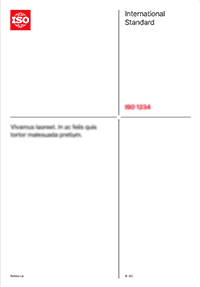Тезис
ISO 17734-1:2013 gives general guidance for the sampling and analysis of airborne isocyanates in workplace air. When amines and aminoisocyanates are suspected to be emitted (e.g. from thermal degradation of PUR), it is recommended that, in addition to isocyanates, the amines and aminoisocyanates in the air are determined, using DBA and ethyl chloroformate as reagents (see ISO 17734-2).
The method is suitable for the determination of a wide range of different isocyanates in both the gas and particle phases. Typical monofunctional isocyanates that can be determined are isocyanic acid (ICA), methyl isocyanate (MIC), ethyl isocyanate (EIC), propyl isocyanate (PIC), butyl isocyanate (BIC), and phenyl isocyanate (PhI). Typical monomeric diisocyanates include 1,6-hexamethylene diisocyanate (HDI), 2,4- and 2,6-toluene diisocyanate (TDI), 4,4'-methylenediphenyl diisocyanate (MDI), 1,5-naphthyl diisocyanate (NDI), isophorone diisocyanate (IPDI), and 4,4'-dicyclohexylmethane diisocyanate (HMDI). Multifunctional isocyanates that can be determined are typically oligomers in polymeric MDI, biuret-, isocyanurate-, and allophanate-adducts, and prepolymeric forms of isocyanates.
The instrumental detection limit for aliphatic isocyanates is about 5 nmol/sample and for aromatic isocyanates, it is about 0,2 nmol/sample. For a 15 l air sample, this corresponds to 0,6 ng∙m?3 for HDI and 0,02 ng∙m?3 for TDI.
The useful range, for a 5 l air sample, of the method is approximately 0,001 µg∙m?3 to 200 mg∙m?3 for TDI.
Общая информация
-
Текущий статус: ОпубликованоДата публикации: 2013-12Этап: Международный стандарт подлежит пересмотру [90.92]
-
Версия: 2
-
Технический комитет :ISO/TC 146/SC 2ICS :13.040.30
- RSS обновления
Жизненный цикл
-
Ранее
ОтозваноISO 17734-1:2006
-
Сейчас
ОпубликованоISO 17734-1:2013
Стандарт, который пересматривается каждые 5 лет
Этап: 90.92 (Будет пересмотрено)-
00
Предварительная стадия
-
10
Стадия, связанная с внесением предложения
-
20
Подготовительная стадия
-
30
Стадия, связанная с подготовкой проекта комитета
-
40
Стадия, связанная с рассмотрением проекта международного стандарта
-
50
Стадия, на которой осуществляется принятие стандарта
-
60
Стадия, на которой осуществляется публикация
-
90
Стадия пересмотра
-
95
Стадия, на которой осуществляется отмена стандарта
-
00
-
Будет заменено
В стадии разработкиISO/CD 17734-1

